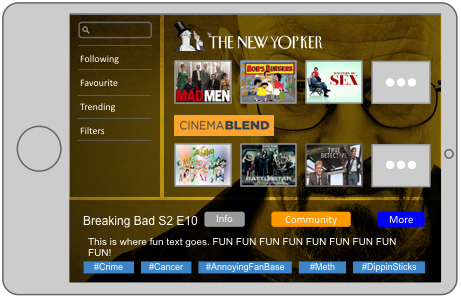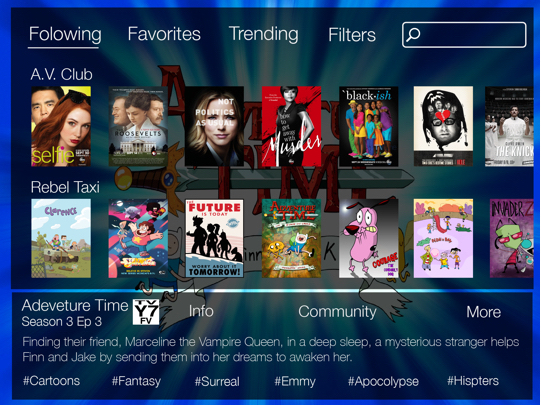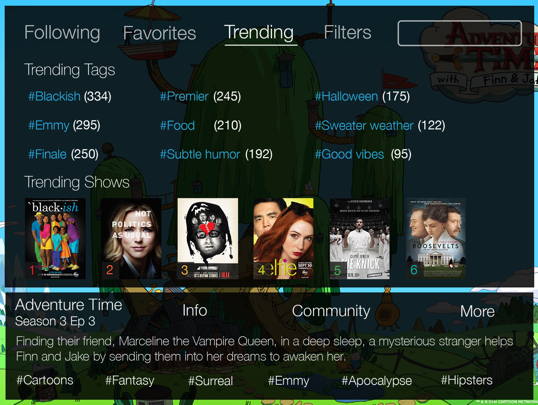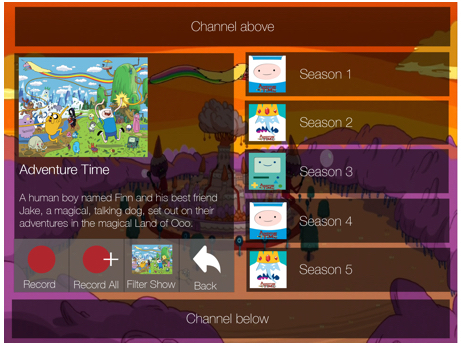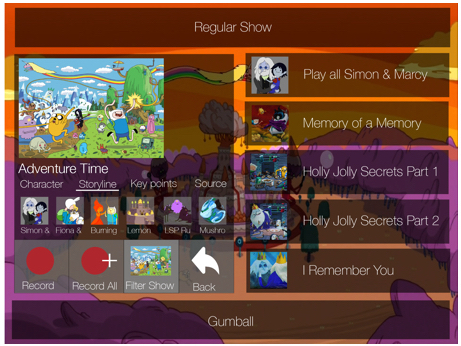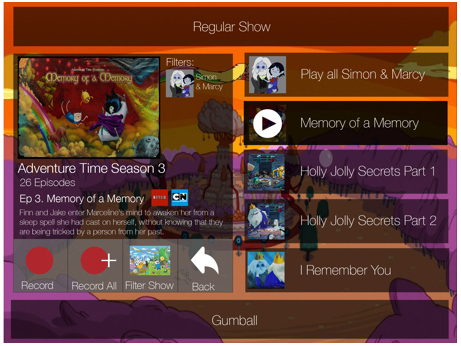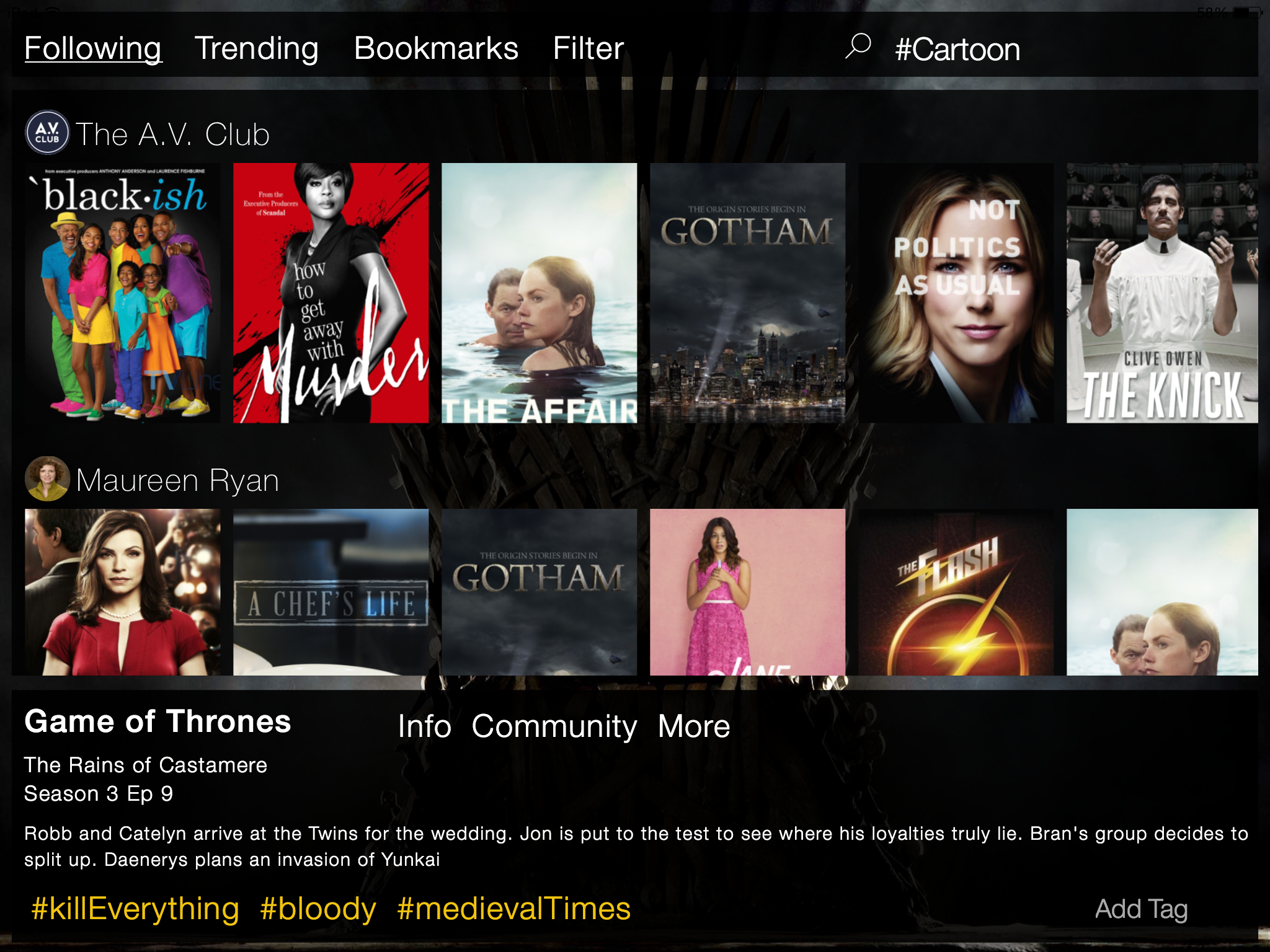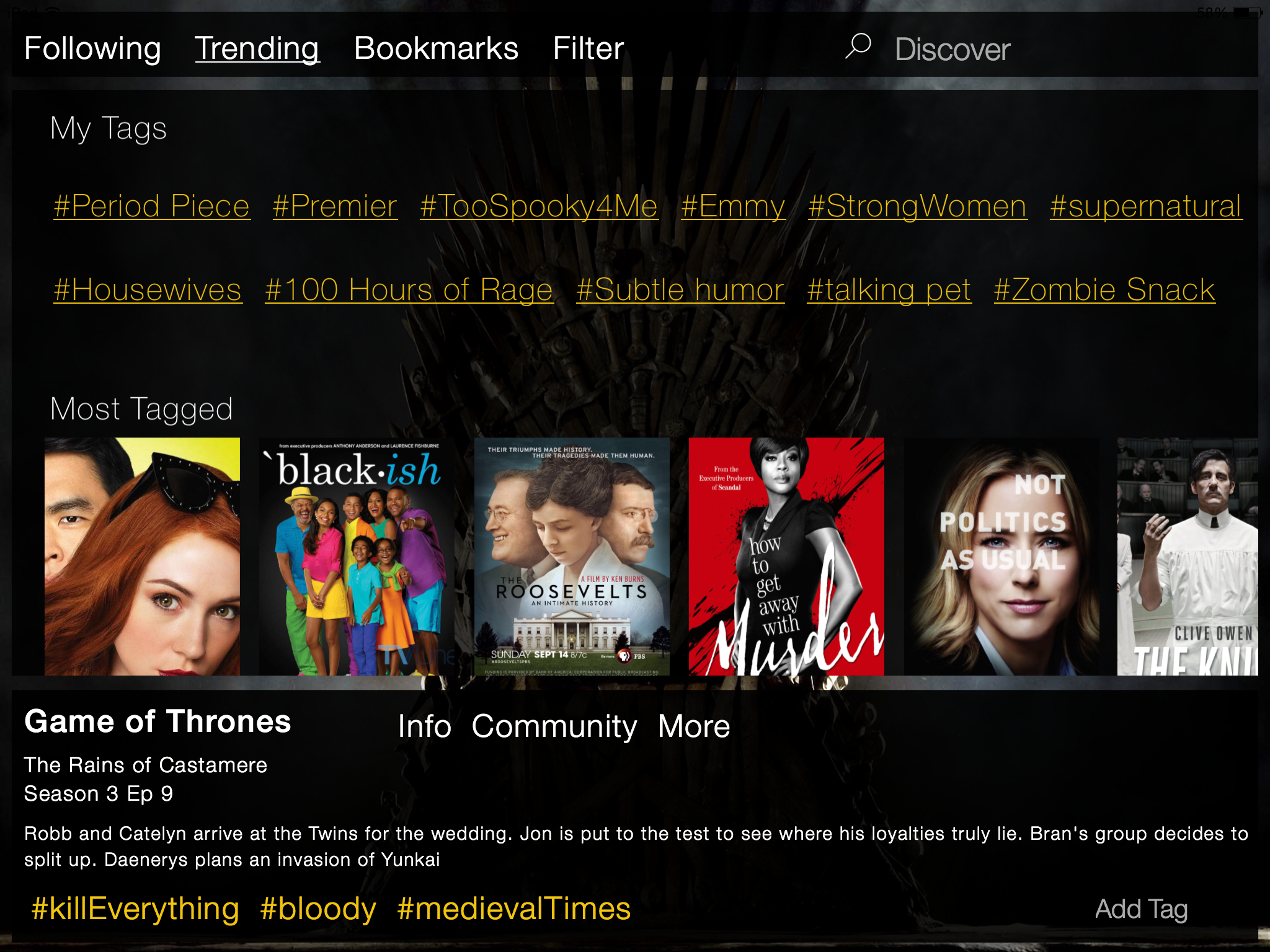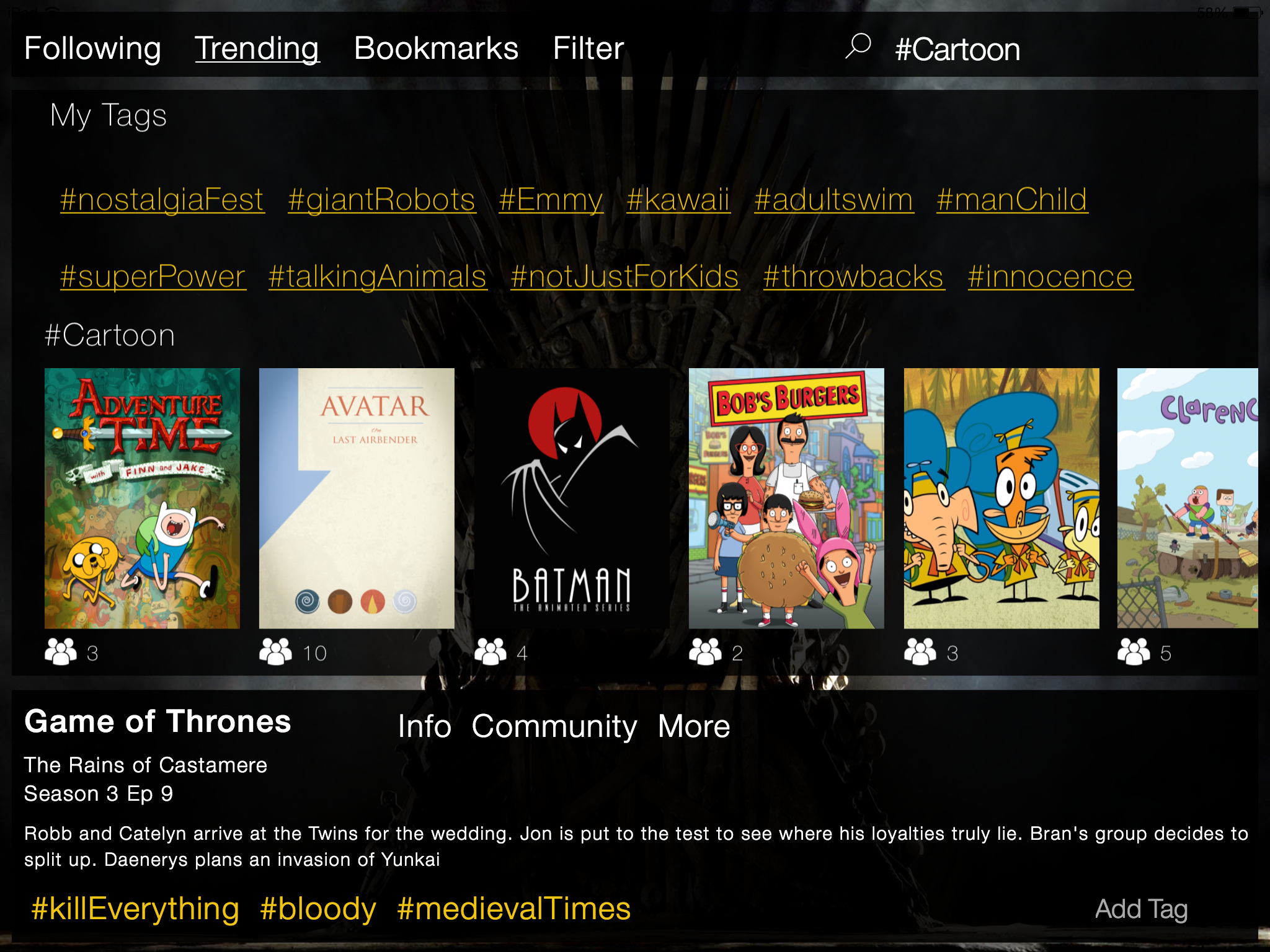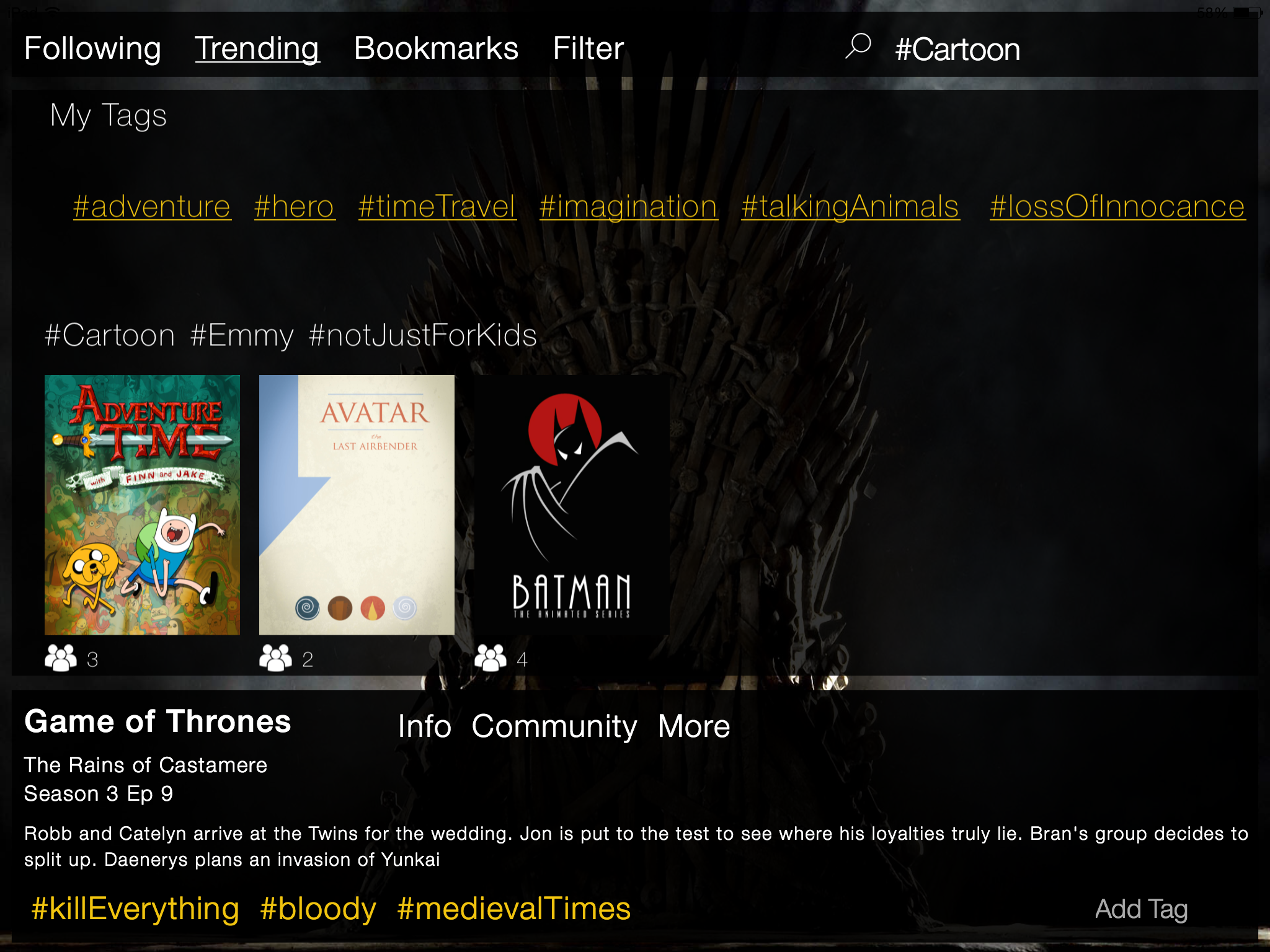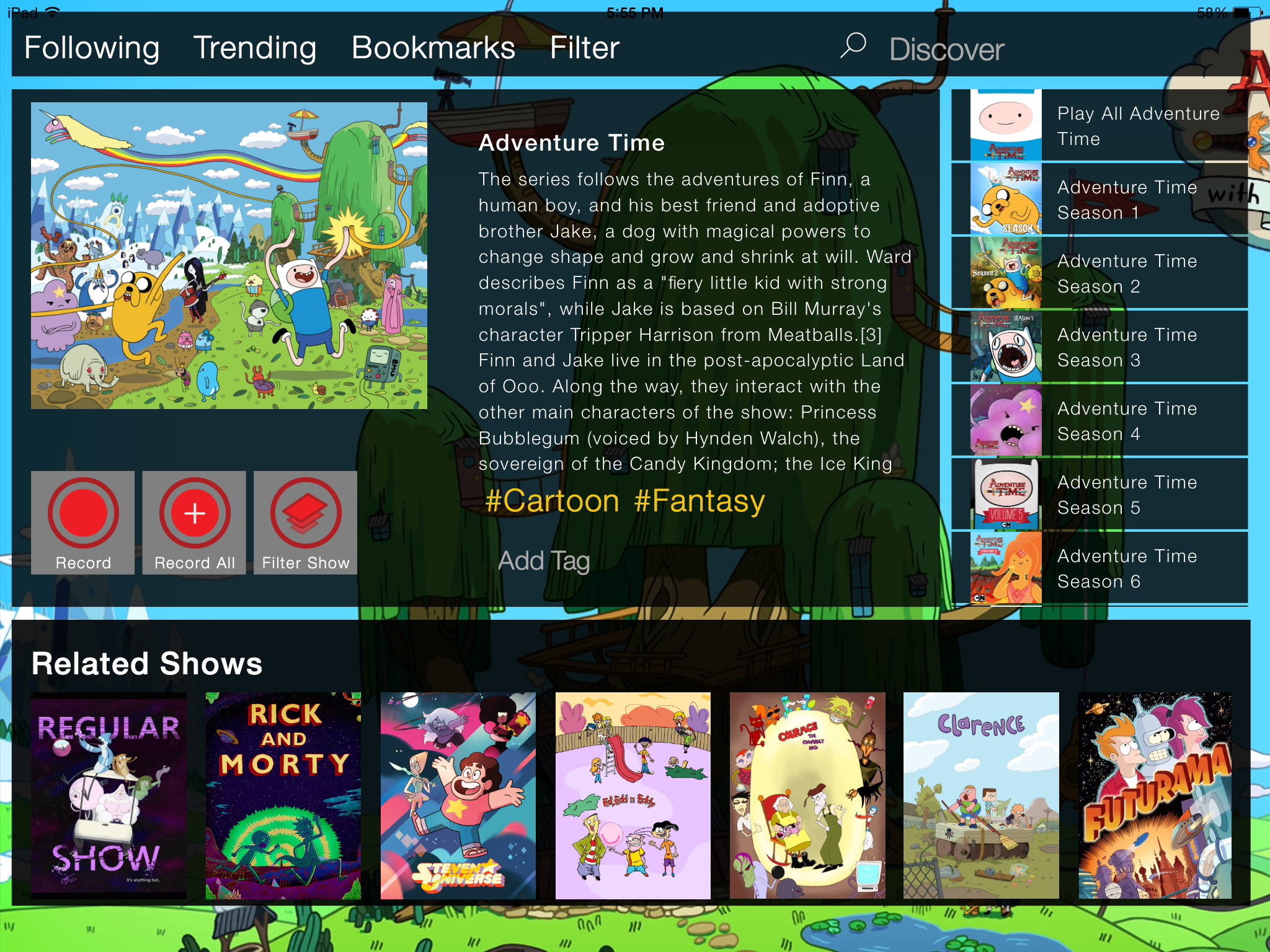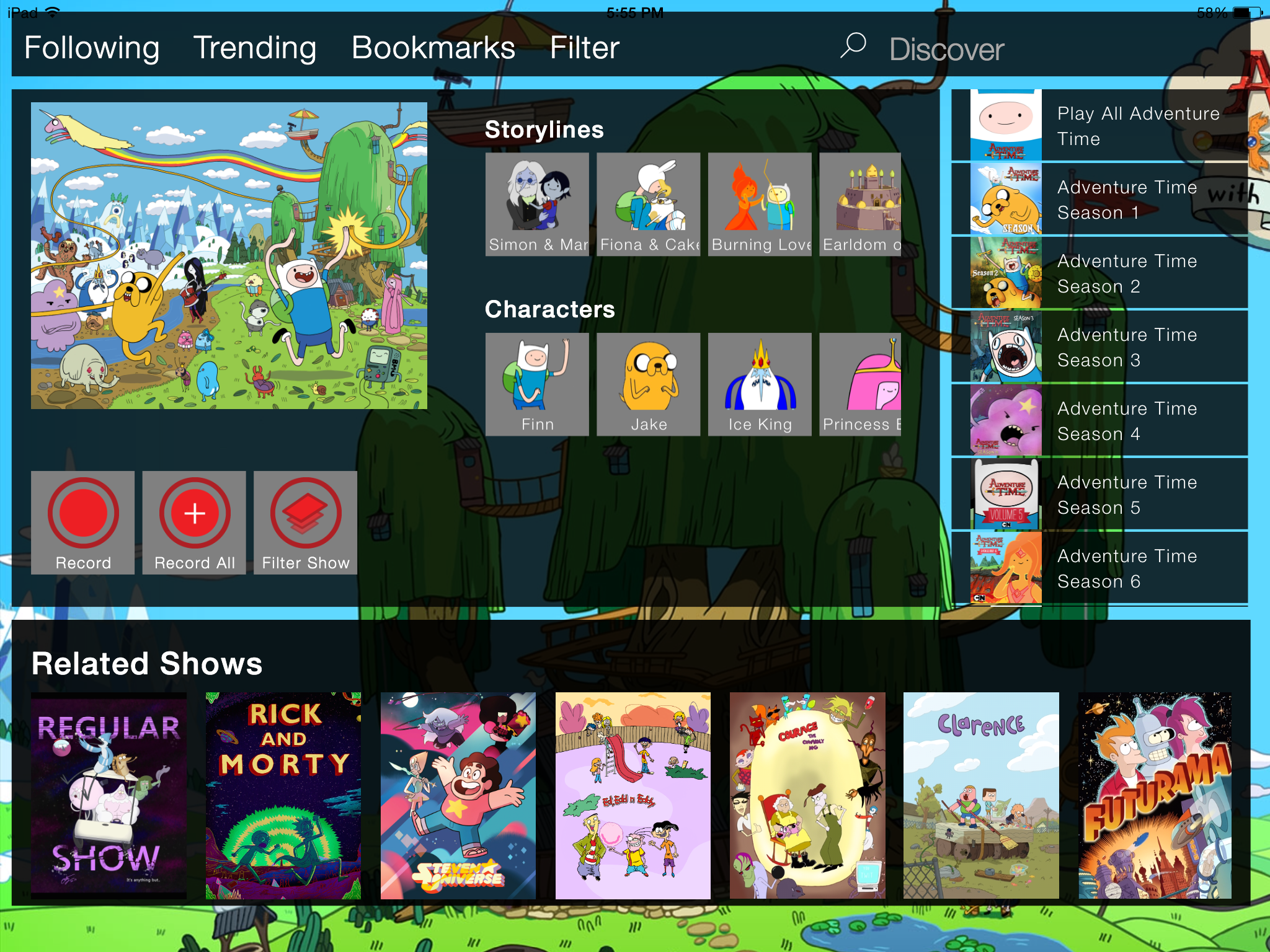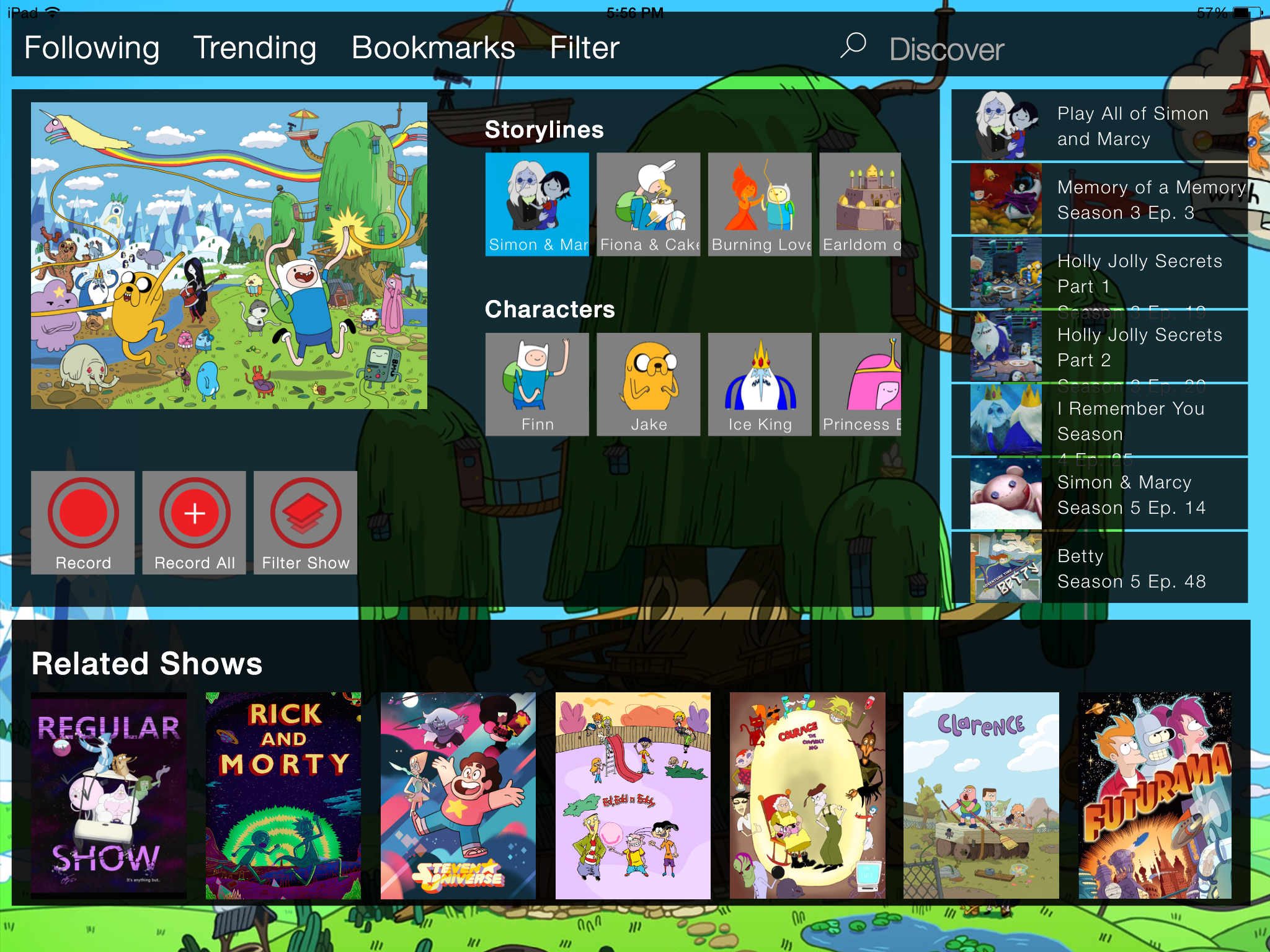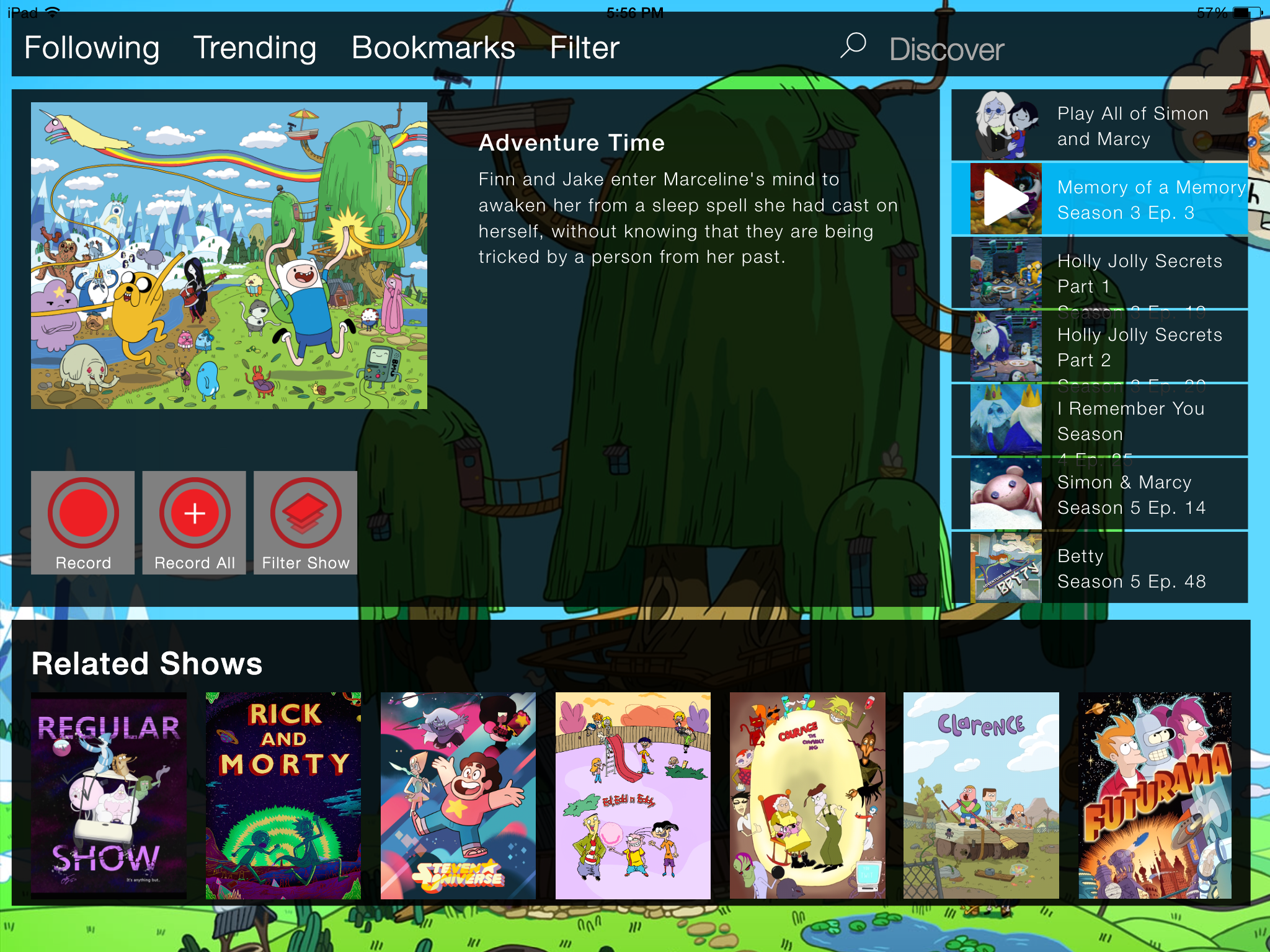The Challenges
The way users find and describe content is not reflected by current electronic program guides (EPG) or content recommendation algorithms.
How do you make it easier for users to engage with characters and relationships in television shows?
Role
Prototyper
UX Design
Project Manager
Value Created
Improved flow of the viewing experience through seamless recommendations
Easy and relevant browsing creating a feeling of serendipity
Tagging system to invite more user engagement with content
Allowed users to more deeply explore easily through enhanced show details pages
The Story
I was entering into my 3rd semester at Georgia Tech and had just finished a great internship with Ericsson Mediaroom. During my time there, one of the features of the viewing experience that fascinated me was the EPG, and how it remained mostly the same since its inception even as the nature of the viewing experience changed. The EPG only took in 2 variables: time and content. In a world where on demand is an expectation, time isn’t a constraint, hundreds of steaming services and a glut of user behavior data to drive recommendations, we could develop a greatly enhanced programming experience. I proposed the idea to the lab one of the semester’s project and recruited a small team to move forward.
Research
The teams first step was to gather information about how people consume content, and what other products were doing in the space. We worked together to design an 11 question survey that would tell us about how users found, decided on, consumed, and categorized content. Once we had reviewed it with our lab we sent it out to various students in our lab and program, and our friends and family. We received about 18 responses to our survey, and found overwhelmingly that people found decided on and consumed content through their friends, and did not use traditional genres to categorize the content that they consumed. To supplement our survey, we also built a competitive analysis matrix to look at the browsing experience across other content distribution platforms, and baseline some core feature set to be. Using our survey and competitive analysis results, my experience at Ericsson Mediaroom, and our labs previous research work around world exploration , we began to think about a product that would better fit how users actually discover explore and enjoy content.
Survey Results
Competitive analysis Matrix
The Solution
We named our solution The Infinite Programing Guide (IPG) because the product we wanted to create would seemingly have an infinite stream of content provided to the viewer.
The IPG connects users to individuals and curators who they follow through social media. Using that data it connects users to more relevant content. It also allows users to discover shows and genres that are popular with a national audience and describe content more naturally using tags. These changes move content discovery and curation inline with how users currently discover and describe content on and everyday basis. These changes increase the value added by a program guide and recommendation system for the user.
When a user has selected a show to watch or learn more about they will be able to explore different characters and storylines within the show. This curated experience allows users to engage deeper with their favorite characters and relationships in the show.


